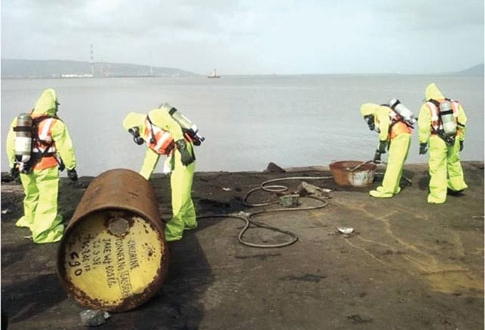
India has been traditionally vulnerable to natural hazards on account of its unique geo-climatic and social conditions. Floods, droughts, cyclones, earthquakes and landslides have been recurrent phenomena, affecting 85% of its geographical area. About 60% of the landmass is prone to earthquakes of various intensities; over 12% is prone to floods; about 8% of the total area is inclined to cyclones and 68% of the area is susceptible to drought. Disaster risks in India are further compounded by increasing vulnerabilities related to the steadily growing population, rapid urbanization, increasing industrialization, development within high risk zones, environmental degradation and climate change. Significantly, the recent years have witnessed a marked increase in frequency as also intensity of natural disasters such as the Orissa super cyclone (1999), Gujarat earthquake (2001), Tsunami (2004), Jammu & Kashmir earthquake (2005) and Bihar floods (2008).
These developments have rightly brought about a paradigm shift in approach of the government from hitherto mere relief and response-centric approach to a holistic method encompassing the entire gamut of prevention, mitigation, preparedness, response, relief, rehabilitation and reconstruction in dealing with disasters. In recognition of this, the government took a defining step on December 23, 2005, by enacting the Disaster management Act, which envisaged the creation of disaster relief agencies like National Disaster Management Authority ( NDMA), headed by the Prime Minister and State Disaster Management Authorities (SDMAs), headed by the respective Chief Ministers of the states, to spearhead and implement a holistic and integrated approach to disaster management in India for natural disaster recovery among other forms of disaster responses
ROLE OF National Disaster Response Force (NDRF)
The DM Act, 2005, has made the statutory provisions for the constitution of the National Disaster Response Force (NDRF) for the purpose of specialized response to man-made and natural disasters.
NDRF is constituted of eight battalions, two each from the CRPF, BSF, CISF and ITBP. Each battalion will provide 18 self-contained specialists search-and-rescue teams of 45 personnel each, including engineers, technicians, electricians, dog squads and medical/paramedics. The total strength of each battalion is 1,149. Out of the eight battalions four battalions have the capacity to respond to CBRN emergencies in addition to natural disasters.
Deployment
These NDRF battalions are strategically located at 10 different locations in the country based on the vulnerability profile to cut down the response time for their deployment. NDRF units are deployed at Pune, Gandhinagar, Kolkata, Guwahati, Arakkonam, Mundali, Bhatinda, Noida, Patna and Vijaywada.
NDRF has proved its importance in achieving this vision by highly skilled rescue- and-relief operations, regular and intensive training and re-training, familiarization exercises, community awareness and capacity building within the area of responsibility, carrying out mock drills and joint exercises with the various stakeholders.






